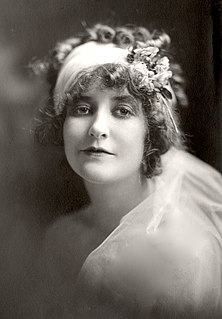
Alice Lake was an American film actress. She began her career during the silent film era and often appeared in comedy shorts opposite Roscoe Arbuckle.

Triangle Film Corporation was a major American motion-picture studio, founded in July 1915 in Culver City, California and terminated 7 years later in 1922.

Bertram Lytell was an American actor in theater and film during the silent film era and early talkies. He starred in romantic, melodrama, and adventure films.

Rhea Ginger Mitchell was an American film actress and screenwriter who appeared in over 100 films, mainly during the silent era. A native of Portland, Oregon, Mitchell began her acting career in local theater, and joined the Baker Stock Company after completing high school. She appeared in various regional theater productions on the West Coast between 1911 and 1913.

John Edward Ince, also credited as John E. Ince, was an American stage and motion pictures actor, a film director, and the eldest brother of Thomas H. Ince and Ralph Ince. John Ince became a member of The Lambs Club in 1919 like his brother Ralph, who had joined in 1916.

Voodoo Man is a 1944 American horror film directed by William Beaudine and starring Bela Lugosi, John Carradine, and George Zucco.

Alias Jimmy Valentine is a 1920 American silent film crime drama starring Bert Lytell, directed by Edmund Mortimer and Arthur Ripley, and released through Metro Pictures.

Polly with a Past is a 1920 American silent drama film produced and distributed by Metro Pictures and directed by Leander de Cordova. Based on a 1917 Broadway stage play of the same name, the film starred Ina Claire, reprising her stage role in the title role of Polly. Clifton Webb had an early unbilled screen appearance in this film.

Our Mrs. McChesney is a lost 1918 American silent comedy-drama film produced and distributed by Metro Pictures, directed by Ralph Ince, and based on the 1915 play by Edna Ferber and George V. Hobart which starred Ethel Barrymore.

The Dawn of Understanding is a lost 1918 American silent Western comedy film produced by The Vitagraph Company of America and directed by David Smith. It stars Bessie Love in the first film of her nine-film contract with Vitagraph. It is based on the short story "The Judgement of Bolinas Plain" by 19th-century Western writer Bret Harte.

Robert Kurrle, also known as Robert B. Kurrle, was an American cinematographer during the silent and early talking film eras. Prior to entering the film industry, he was already experimenting with aerial photography. Considered a very prominent cinematographer, even his early work received notice and praise from both critics and other industry professionals. The advent of sound film did not abate his continued rise, and he became the top director of photography at Warner Brothers by 1932.

The Lone Wolf is a 1917 American silent drama film based on the 1914 novel The Lone Wolf by Louis Joseph Vance. Starring Bert Lytell and Hazel Dawn, it was adapted for the screen by George Edwardes-Hall and produced and directed by Herbert Brenon. No prints of the film are known to survive, so it is currently classified as lost.

Maxwell Karger (1879–1922) was an important movie producer and motion picture director during the silent film era of the 1910s.

A Message from Mars is a 1921 American silent fantasy comedy film directed by Maxwell Karger and starring Bert Lytell, Raye Dean, and Maude Milton. It is based on the 1899 play with the same name by Richard Ganthony. The film was released by Metro Pictures on April 11, 1921.

Burnt Wings is a 1920 American drama film directed by Christy Cabanne and starring Josephine Hill, Frank Mayo, and Rudolph Christians. It was released on March 29, 1920.

The Blazing Trail is a 1921 American silent melodrama film directed by Robert Thornby and starring Frank Mayo, Frank Holland, and Verne Winter. It was released in May 1921.

Breakers Ahead is a 1918 American silent drama film, directed by Charles Brabin. It stars Viola Dana, Clifford Bruce, and Mabel Van Buren, and was released on March 25, 1918.

Boston Blackie's Little Pal is a 1918 American silent drama film, directed by E. Mason Hopper. It stars Bert Lytell, Rhea Mitchell, and Rosemary Theby, and was released on August 26, 1918.

Blackie's Redemption, also known by its working title Powers That Pray, is a 1919 American silent drama film directed by John Ince. It stars Bert Lytell, Alice Lake, and Henry Kolker, and was released on April 14, 1919.

The Conflict is a 1916 American silent drama film directed by Ralph Ince and starring Lucille Lee Stewart, Huntley Gordon and Wilfred Lytell.




















